Overview – Cognition and development
This A level psychology topic looks at several theories and explanations of how infants learn and develop their mental abilities, including:
- Piaget’s theory of cognitive development (including equilibration and the processes of assimilating and accommodating experiences into schema, as well as the stages of intellectual development and their characteristics)
- Vygotsky’s theory of cognitive development (including the zone of proximal development and scaffolding)
- Baillargeon’s explanation of infant abilities (that babies have an innate physical understanding of the world as evidenced by violation of expectation studies)
- The development of social cognition (including Selman’s levels of perspective taking, theory of mind and the Sally-Anne test, and the mirror neuron system)
Piaget’s theory of cognitive development
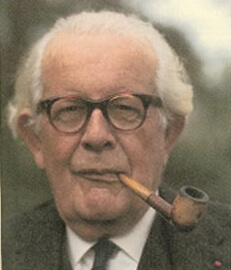 Piaget’s theory says humans are born with innate (biological) abilities and that cognitive development occurs through a combination of these abilities and environmental interactions (in particular interactions with physical objects).
Piaget’s theory says humans are born with innate (biological) abilities and that cognitive development occurs through a combination of these abilities and environmental interactions (in particular interactions with physical objects).
- Equilibration describes how environmental interactions motivate cognitive development and the development of schema
- These cognitive developments occur according to the same stages of development for all infants, which suggests they are directed by biological processes to some degree
Schema
If you remember from the approaches topic, schema are cognitive frameworks/mental models/ways of organising information and understanding the world. Piaget’s theory explains children’s cognitive development in terms of continually challenging and updating these schema through interacting with the environment.
Initially, children are born with very basic schema (e.g. the basic reflex to suck things). These basic schema serve as a foundation from which the child can interact with the environment and learn new things. Over time, the child will develop new schema (e.g. about people, objects, and themselves) and update their existing schema. This process of developing schema process continues all through a person’s life but is most notable within the first 15 years.
According to Piaget’s theory, development of schema involves:
- Equilibration (swinging between equilibrium and disequilibrium)
- Adaptation (assimilation and accommodation)
Equilibration
Children swing between equilibrium and disequilibrium in a process known as equilibration. When a new experience fits within existing schema, it can be assimilated and equilibrium is maintained. If a new experience does not fit within existing schema, this causes a state of disequilibrium and the current schema must be updated to accommodate the new experience.
Equilibrium
Equilibrium is when an experience fits within the child’s existing schema (i.e. the experience is in line with the child’s expectations). This is a pleasant and desirable state because it means the child understands the world around them.
When a new experience fits with existing schema, it is assimilated into that schema.
For example, a child might develop the gender schema that women have long hair. If the child meets a new woman and she has long hair, the child can include/assimilate this new person within their existing schema of ‘woman’.
Disequilibrium
Disequilibrium is when an experience does not fit within the child’s existing schema. This is an unpleasant state because it means the child does not understand what is going on, causing confusion. This unpleasant feeling creates a motivation to learn and return to the pleasant state of equilibrium.
When a new experience does not fit within existing schema, it cannot be assimilated into that schema. Instead, the child must create new schema or update their existing schema in order to accommodate the new experience. Once the schema is updated to accommodate the new experience, the child returns to a state of equilibrium.
For example, if a child has developed the gender schema that women have long hair but then meets a woman with short hair, this causes disequilibrium. The child can accommodate this new experience and return to equilibrium by updating their schema of ‘woman’ to include people with short hair.
Stages of intellectual development
Piaget observed that children of similar ages would give similar wrong answers to certain questions. Piaget also observed that children would learn to give the right answers at similar ages too, suggesting intellectual development occurs in a series of stages. These stages were observed cross culturally, suggesting intellectual development is primarily controlled by genetics and biology rather than culture.
Based on these observations, Piaget proposed questions is characteristic of 4 stages of intellectual development:
| Stage | Age | Key concepts |
| Sensorimotor | 0 – 2 years | As well as basic language, the child learns object permanence: That physical things still exist even when the child isn’t looking. |
| Pre-operational | 2 – 7 years | Thinking is egocentric: The child can only see things from their own perspective. |
| Concrete operational | 7 – 11 years | The child learns conservation: That an object can maintain its mass/volume/quantity even if its appearance changes. The child learns class inclusion: That things (e.g. dogs) can be sub-sets of other things (e.g. animals). |
| Formal operational | 11+ years | The child learns to reason abstractly (rather than focusing on concrete examples). |
Sensorimotor
The sensorimotor stage of intellectual development occurs from birth to age 2 and is primarily concerned with the physical world and body movement.
During this stage, babies develop object permanence (an understanding that objects still exist even when they are out of view). This is illustrated by the observation that before ~8 months of age babies switch focus from an object as soon as they can no longer see it. But from around 8 months, babies will look for an object when they can no longer see it, suggesting they understand that it continues to exist.
Other intellectual developments in the sensorimotor stage include basic language and, from around 18 months, representational thought (i.e. being able to think about objects in their heads as opposed to only being able to think about things that are physically in front of them).
Pre-operational
The pre-operational stage of intellectual development occurs between 2 years – 7 years of age. Within the pre-operational stage, Piaget distinguishes between pre-conceptual (2 – 4 years) and intuitive (4 – 7 years).
In the pre-operational stage, thinking is still characterised by egocentrism (the child can only see things from their own perspective and can’t understand the perspective of other people). For example, Piaget and Inhelder’s (1956) 3 mountains task let children examine a model of a Swiss mountain on a table. A doll was placed on top of one of the model mountains and the children were asked to select pictures of what the doll could see. However, the 4 year olds would consistently select the pictures of what they saw (not the doll), which suggests the children were unable to visualise things from another person’s perspective.
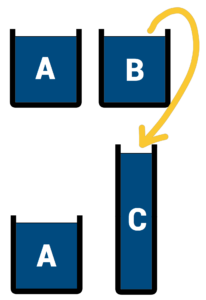 During the pre-operational stage, the child has not mastered conservation (the understanding that changing the appearance of an object does not change its mass or quantity or volume). For example, Piaget (1952) conducted an experiment where 7 year olds were shown two equal beakers of water: A and B. The children could see that A and B contained the same amount of water. But when the water from B was poured into a taller, thinner, beaker (C), the children thought beaker C contained more water.
During the pre-operational stage, the child has not mastered conservation (the understanding that changing the appearance of an object does not change its mass or quantity or volume). For example, Piaget (1952) conducted an experiment where 7 year olds were shown two equal beakers of water: A and B. The children could see that A and B contained the same amount of water. But when the water from B was poured into a taller, thinner, beaker (C), the children thought beaker C contained more water.
Children in the pre-operational stage have not developed class inclusion (the understanding that things can be sub-sets of other things) either. For example, Piaget and Inhelder (1956) showed children a picture with 5 dogs and 2 cats and then asked: “Are there more dogs or more animals?”. The children would answer that there are more dogs, because they are unable to comprehend that each dog was a member of the dog class and the animal class.
Concrete operational
The concrete operational stage occurs between 7 years – 11 years of age. Operations, here, are the use of schema to perform mental actions, such as logical reasoning.
Conservation is an example of an operation. In the concrete operations stage, children understand conservation and so are able to correctly identify that, for example, beaker C in Piaget’s example above contains as much water as beaker A despite its different appearance.
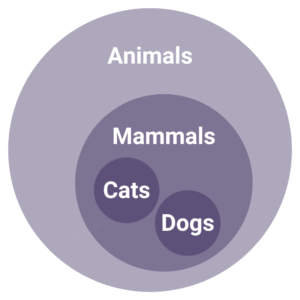 The child also learns class inclusion in the concrete operational stage. For example, the child can understand that a dog is a mammal, and that a mammal is an animal. Returning to Piaget and Inhelder’s example above, a child in the concrete operational stage could correctly answer that there are more animals than dogs when shown a picture with 5 dogs and 2 cats.
The child also learns class inclusion in the concrete operational stage. For example, the child can understand that a dog is a mammal, and that a mammal is an animal. Returning to Piaget and Inhelder’s example above, a child in the concrete operational stage could correctly answer that there are more animals than dogs when shown a picture with 5 dogs and 2 cats.
Egocentrism also declines during the concrete operational stage in a process called decentering. The child learns to be able to imagine things from the perspective of someone else other than themself. So, in the 3 mountains task above, children in the concrete operational stage are able to select photos from the doll’s perspective and not just their own.
However, in the concrete operational stage, these operations can only be performed on objects directly in front of the child (and not abstractly), which is why this stage is concrete operational. Abstract reasoning develops in the formal operational stage.
Formal operational
The formal operational stage occurs from 11 years of age onwards. As mentioned, operations are the use of schema to perform mental actions. But whereas these operations were restricted to concrete examples in the concrete operational stage, children in the formal operational stage are able to reason abstractly and hypothetically.
For example, children in the formal operational stage could use abstract reasoning to arrive at the correct answer – 10 – for the following question:
- Martian dogs have 10 legs and can fly
- Rex is a Martian dog
- How many legs does Rex have?
By contrast, children in the earlier concrete operational stage get hung up on specific (concrete) facts, like how dogs don’t have 10 legs and can’t fly.
AO3 evaluation points: Piaget's theory of cognitive development
Strengths of Piaget’s theory of cognitive development:
- Supporting evidence: Piaget and colleagues conducted several experiments that support the theory and stages of development. For example:
- Egocentrism: Piaget and Inhelder’s (1956) 3 mountains task showed 4 year old children struggled to put themselves in the position of the doll, which supports Piaget’s claim that thinking in the pre-operational stage is egocentric.
- Conservation: Piaget’s (1952) experiment where young children can’t tell that liquid poured into a taller, thinner, beaker doesn’t increase the volume of liquid supports Piaget’s claim that children don’t understand conservation in the pre-operational stage.
- Class inclusion: Piaget and Inhelder’s (1956) experiment where children said there are more dogs than animals supports Piaget’s claim that children don’t understand class inclusion in the pre-operational stage.
Weaknesses of Piaget’s theory of cognitive development:
- Conflicting evidence: Some studies contradict Piaget’s stages of development. For example:

- Egocentrism: Hughes (1975) conducted an experiment where children aged between 3 – 5 years old were shown a model with two walls so that the room was split into quadrants. Policeman dolls were put in 2 of the quadrants and the children were then asked to hide another doll so that the policeman couldn’t see it. 90% of the children gave the correct answer, which suggests they were able to decenter and see things from the policeman’s point of view. This contradicts Piaget’s claim that thinking in the pre-operational stage is egocentric. Hughes’ argued that the reason children failed Piaget and Inhelder’s (1956) 3 mountains task was because they didn’t understand it, not because of egocentrism.
- Conservation: One of Piaget’s studies on conservation found that children <7 years thought a row of beads that was spread out contained more beads than the same row of beads placed closer together, suggesting they did not understand conservation. However, McGarrigle and Donaldson (1974) conducted a similar version of the study where a ‘naughty teddy’ puppet accidentally pushed the beads together. In this variation, 72% of the children correctly said both rows of beads contained the same amount. This suggests that children <7 years old do understand conservation.
- Class inclusion: Siegler and Svetina (2006) found that 5 year-old children were able to learn class inclusion when it was explained to them. This contradicts Piaget’s claim that children don’t learn class inclusion until at least 7 years old (the concrete operational stage).
- Methodological concerns: For example:
- Much of Piaget’s theory was based on unstructured observations and clinical interviews with children and so may be biased towards Piaget’s subjective interpretations.
- Many of Piaget’s experiments used situations that were complicated or unfamiliar to the participants. For example, children might not have understood what they were being asked in the 3 mountains task, which may have made it seem like they were only able to think from an egocentric perspective when in fact they just didn’t understand the task.
- Alternative theories: Piaget argued that cognitive development came before language development. However, Vygotsky argues it’s the other way round: A child needs to develop language first in order to be able to learn from others and develop cognitively.
Vygotsky’s theory of cognitive development
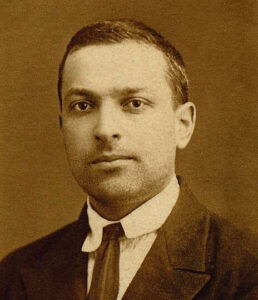 Like Piaget, Vygotsky’s theory describes how interactions with the environment explain cognitive development. But where Piaget emphasised interactions with physical objects, Vygotsky emphasises social and cultural factors (e.g. interaction with parents, teachers, and other children). For Vygotsky, learning is first intermental (between two people) and then made intramental (internalised within the individual).
Like Piaget, Vygotsky’s theory describes how interactions with the environment explain cognitive development. But where Piaget emphasised interactions with physical objects, Vygotsky emphasises social and cultural factors (e.g. interaction with parents, teachers, and other children). For Vygotsky, learning is first intermental (between two people) and then made intramental (internalised within the individual).
- The zone of proximal development is the gap between an infant’s current intellectual ability and their potential intellectual ability
- Teachers (e.g. adults or children with more knowledge) provide scaffolding to the infant to help them learn and progress through the zone of proximal development
Elementary and higher mental functions
Vygotsky distinguishes between two types of mental functions:
- Elementary: Innate functions such as reflexes and sense perception
- Higher: Complex functions such as language, reasoning, and understanding
Vygotsky’s theory is concerned with how these higher mental functions develop through social interactions.
Development of language
Language is an example of a higher mental function and one that is crucial for cognitive development. According to Vygotsky, language develops according to the following timeline:
- External:
- Social speech (0 – 3 years): Infants learn language to communicate with caregivers (e.g. to say they’re hungry).
- Self-speech (3 – 7 years): The infant talks out loud to direct themself (i.e. thinking out loud)
- Internal:
- Inner speech (7+ years): The self-speech becomes internalised (i.e. thought) so that the infant can direct themself silently
Vygotsky’s stages of development
Vygotsky conducted experiments where he gave children of different ages objects with symbols on them and observed how they tried to work out what the symbols meant. Based on these experiments, Vygotsky argued that children develop concept formation according to the following sequence:
- Vague syncretic: Trial and error with no thought/reasoning of the underlying principles
- Complex: Some use of reasoning/strategy but limited success
- Potential concept: Successful use of a single strategy/reasoning process
- Mature concept: Successful use of a several strategies/reasoning processes
There is some overlap with Piaget’s stages of development here. For example, Vygotsky’s mature concept stage is somewhat similar to Piaget’s formal operational stage.
Zone of proximal development
The zone of proximal development is the gap between an infant’s current intellectual ability and their potential intellectual ability.
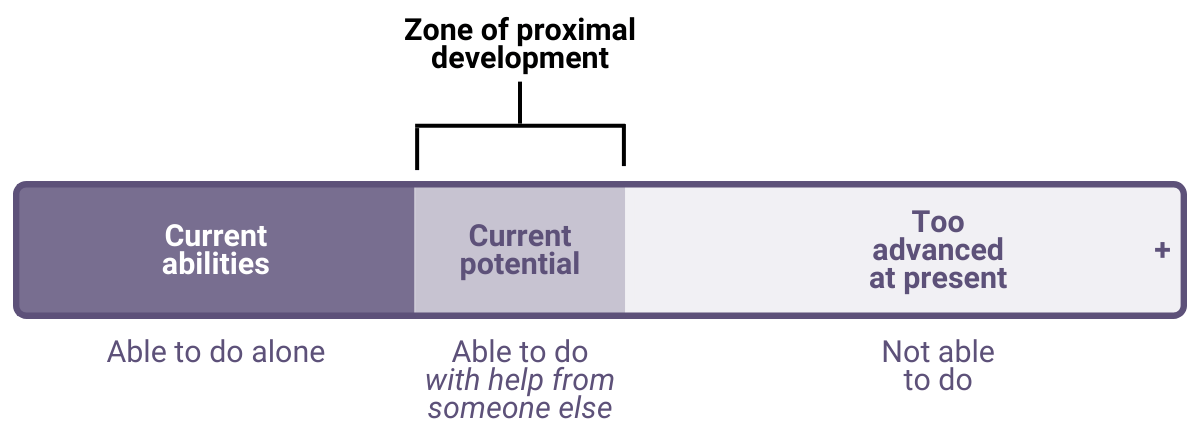
For example, a 3 year-old child may currently be able to write a few individual words but be unable to write a sentence. However, the 3 year-old child has the potential to be able to write a sentence with help from a teacher (e.g. a parent or older sibling) and so writing a sentence is within the child’s zone of proximal development. The teacher’s job is to guide the child through the zone of proximal development so that they can complete this task alone.
One way a teacher can help a child progress through the zone of proximal development is via scaffolding.
Scaffolding
Scaffolding is when a teacher (e.g. a parent or older sibling) helps an infant to learn by providing a framework – a scaffold – to help them solve a problem or complete a task. As the infant progresses, the scaffolding is gradually removed until the infant is capable of completing the task by itself.
 For example, a parent may physically guide a young child’s hand to show them how to write their name. Then, as the child attempts to write their name without the physical guidance, the parent may watch and provide verbal instructions to help. Eventually, this scaffolding is removed as well and the infant is able to write their name by itself.
For example, a parent may physically guide a young child’s hand to show them how to write their name. Then, as the child attempts to write their name without the physical guidance, the parent may watch and provide verbal instructions to help. Eventually, this scaffolding is removed as well and the infant is able to write their name by itself.
AO3 evaluation points: Vygotsky's theory of cognitive development
Strengths of Vygotsky’s theory of cognitive development:
- Supporting evidence: Several studies support aspects of Vygotsky’s theory. For example, Wood et al (1976) observed children aged 3 – 5 years old as they built a model pyramid from blocks with the help of a teacher. This task was too difficult for the children to complete by themselves, but simple enough that they could do it with the help of the teacher (i.e. it was in the subjects’ zone of proximal development). The researchers found that scaffolding by the teacher (e.g. demonstrating solutions that the child could recognise, and guiding children without telling them exactly what to do) enabled the children to complete the task. This study thus demonstrates both the zone of proximal development and the benefits of using scaffolding to help children learn within this zone.
- Practical applications: Vygotksy’s theory and the understanding that learning is a social phenomenon can be applied to help children learn more effectively. For example, teachers (e.g. adults or older/more able children) can use scaffolding strategies to help less-able infants learn. This may explain why in Van Keer and Verhaeghe (2005), 2nd grade children who were tutored by 5th grade children in addition to normal teaching saw greater reading improvement scores than a control group of 2nd grade children with normal teaching only: The more-experienced learners helped the less-experienced learners.
Weaknesses of Vygotsky’s theory of cognitive development:
- Other factors: In focusing on cultural and social factors only, Vygotsky’s theory may be too reductionist and ignore individual differences. Even within the same culture or social environment, different children will learn at different speeds. This suggests that other factors are needed to explain intellectual development. For example, genetic or biological differences in intelligence may influence cognitive development in addition to social factors, but Vygotsky’s theory does not mention these.
Baillargeon’s explanation of early infant abilities
 Baillargeon’s explanation of early infant abilities challenges Piaget’s stages of development – in particular his claim that infants develop object permanence at around 8 months old. Instead, Baillargeon argues that:
Baillargeon’s explanation of early infant abilities challenges Piaget’s stages of development – in particular his claim that infants develop object permanence at around 8 months old. Instead, Baillargeon argues that:
- Babies are born with an innate physical reasoning system
- As demonstrated by violation of expectation research
Innate physical reasoning
Baillargeon challenges Piaget’s claim that babies develop object permanence (the idea that objects still exist even when you’re not looking at them) at around 8 months old. Instead, Baillargeon argues that babies have a physical reasoning system that is present from birth.
Piaget’s evidence that babies only develop object permanence at 8 months is that before 8 months of age babies stop focusing on an object as soon as it is out of view but after 8 months babies will look for an object when they can no longer see it. However, Bailargeon argues that the only reason babies don’t look for objects prior to 8 months of age is that they lack the motor abilities to do so – not because they lack object permanence.
Baillargeon argues that humans are born with core knowledge/an innate physical reasoning system from birth. Just as horses have an innate ability to walk immediately after being born, for example, humans have an innate ability to understand the physical world. Baillargeon’s violation of expectation studies support this claim.
Violation of expectation
Baillargeon and colleagues have conducted several studies using the violation of expectation procedure to demonstrate that infants under 8 months of age possess knowledge of the physical world.
The idea is that infants will look at things that don’t fit with their understanding of the physical world (i.e. things that violate their expectations) for longer than they will look at things that do fit with their understanding of the physical world (i.e. that are in line with their expectations).
One example of this is Baillargeon and Graber (1987). In this study, infants aged between 5 months and 6 months were shown a rabbit travelling along a track and disappearing behind a wall with a hole in it:
- Scenario 1 (possible event): The rabbit is shorter than the lower edge of the window and so can’t be seen in the hole in the wall
- Scenario 2 (impossible event): The rabbit is taller than the lower edge of the window but doesn’t appear in the hole in the wall

You would expect to see the tall rabbit’s head and ears over the top of the wall but scenario 2 (the impossible event) violates expectations.
Baillargeon and Graber observed that, on average, infants looked at the impossible event for much longer than they looked at the possible event (33.07 seconds vs. 25.11 seconds).
This suggests that the infants (all less than 6 months old) expected the tall rabbit to appear in the gap in the wall and were surprised when it didn’t, which suggests they had an understanding of object permanence. This contradicts Piaget’s claim that infants do not understand object permanence before 8 months of age.
AO3 evaluation points: Baillargeon's explanation of early infant abilities
Strengths of Baillargeon’s explanation of early infant abilities:
- Supporting evidence: See study above.
- Reliable: Several violation of expectation studies have replicated Baillargeon and Graber’s (1987) findings. For example, in Baillargeon and DeVos (1991), 3.5 month-old babies were shown a short carrot and a tall carrot travelling behind a wall with a hole in the top. Again, the babies paid more attention to the tall carrot scenario (because they expected the top of the carrot to appear over the top of the wall and were surprised when it didn’t), which suggests these results are reliable.
Weaknesses of Baillargeon’s explanation of early infant abilities:
- Conflicting evidence: Several researchers have replicated Baillargeon’s experiments but found different results. For example, Rivera et al (1999) replicated Baillargeon’s drawbridge experiment (another violation of expectation scenario) but found no difference between the amount of time infants looked at the impossible event vs. the possible event.
- Alternative explanations: Even if it is true that infants pay more attention to physically impossible scenarios than physically possible scenarios, this does not necessarily show the infants understand that the impossible events are physically impossible. For example, Bogartz et al (2000) and Cashon and Cohen (2000) conducted variations of Baillargeon’s drawbridge experiment but concluded that it was novelty (i.e. new or more interesting events), not impossibility, that determined which event the infants paid more attention to. This suggests that Baillargeon’s conclusion that infants have innate physical reasoning abilities may not be valid because the results may be explained another way.
Development of social cognition
Social cognition is a person’s understanding of themself as an individual in the context of society and other people (e.g. the competing demands of what you want and what other people and society in general may want).
The A-level psychology syllabus mentions 3 aspects of social cognition specifically:
- Selman’s levels of perspective taking
- Theory of mind (including the Sally-Anne test and autism)
- The mirror neuron system
Selman’s levels of perspective-taking
Perspective-taking is the ability to put yourself in another person’s shoes and see things from their point of view. As infants grow, they learn to see things from different perspectives.
 Selman (1980) studied how perspective-taking develops in children over time. He did this by describing scenarios to children and studying their responses. One such scenario was as follows:
Selman (1980) studied how perspective-taking develops in children over time. He did this by describing scenarios to children and studying their responses. One such scenario was as follows:
- Holly injures herself falling out of a tree and promises her Dad she won’t climb trees anymore
- But one day, a friend’s kitten is stuck up a tree and Holly is the only one who is able to climb the tree and save the kitten
- Selman asked the children: Should Holly climb the tree to save the kitten?
Based on their answers, Selman (1980) identified 5 levels of perspective-taking (also called role-taking theory):
| Level and Age |
Description | Response to Holly dilemma |
| Egocentric (undifferentiated) 3 – 6 years |
The child cannot distinguish between their own perspective and other people’s, i.e. the child assumes everyone has the same perspective as them. | The child says Holly should climb the tree and save the kitten and that her father won’t mind. But this is only because they like kittens and want to rescue it – not because they can see things from Holly’s or her father’s perspective. |
| Subjective (differentiated) 6 – 8 years |
The child understands that different people have access to different information and so may have different perspectives. But any difference in perspective is put down to differences in information, not e.g. differences in values. | The child understands that Holly’s father might be angry that Holly climbed the tree if he doesn’t know that she climbed the tree to save the kitten but assumes that he wouldn’t be angry if he knew this. The child can’t understand that, even with the same information, he might still be angry due to different values (e.g. concern for his daughter’s safety overriding concern for a kitten). |
| Self-reflective (second-person) 8 – 10 years |
The child understands that people may have different values that shape their perspective in addition to access to different information. The child also understands that other people can also see things from other people’s perspectives. | The child will say Holly’s father will understand why she climbed the tree. This shows the child can put themself in the shoes of Holly’s father, who has in turn put himself in the shoes of Holly and her values. |
| Mutual (third-person) 10 – 12 years |
The child can imagine the perspective of a neutral third person observing an interaction between two people. This requires being able to integrate two perspectives simultaneously. | The child describes the situation from a neutral perspective. For example, that Holly climbed the tree because she likes kittens even though she promised not to, and that Holly’s father will not punish Holly if he also knows about the kitten. |
| Societal 12 – 15+ years |
The child can take the perspective of a third party within the context of wider societal and cultural values and understand that these values influence the perspectives of the people involved. | Children in this stage typically say that Holly should not be punished for climbing the tree. This is due to the wider societal value of caring for animals, which both Holly and her father will share because they are within the same culture. |
AO3 evaluation points: Selman's levels of perspective-taking
Strengths of Selman’s levels of perspective taking as an explanation of social cognition:
- Supporting evidence: A longitudinal study conducted by Gurucharri and Selman (1982) followed 48 infant boys over several years. At different ages, the participants’ perspective-taking ability was measured using dilemmas such as the Holly example above. The researchers found the infants were able to take more perspectives in response to these dilemmas the older they got, which supports Selman’s hypothesis that perspective-taking ability develops in the sequence described above.
- Practical applications: Perspective-taking has several practical applications.
- Conflict resolution: Boca et al (2018) found that encouraging perspective-taking in conflict resolution reduced hostility between the conflicting groups.
- Physical education: Understanding the limited perspective-taking abilities of children can improve physical education by showing which activities are age-appropriate. For example, football requires teamwork and the ability to take the perspectives of team members (e.g. understanding that another player is in a better position to score and so to pass to them) but if young children lack these abilities physical education can focus on activities that are suitable for the child’s current level of perspective-taking.
Weaknesses of Selman’s levels of perspective taking as an explanation of social cognition:
- Other factors: In focusing only on the cognitive ability to take another’s perspective, Selman’s perspective-taking is too reductionist to be a complete account of social cognition. For example, social experiences (e.g. interactions and disagreements with other people) and biological factors (e.g. genetics) are likely to play a part in both the development of perspective-taking and the development of social cognition more broadly.
- Cultural bias: Most research into perspective-taking has been conducted on people in Western cultures and as such the findings may suffer from cultural bias. For example, Quintana et al (1999) looked at perspective-taking abilities in Mexican-American high school students and found their perspective-taking abilities were different.
Theory of Mind
Theory of mind is not a psychological theory like, for example, Piaget’s or Vygotsky’s. Instead, it refers to our ability to imagine and model the mental states of other people’s minds.
For example, if you hear that your friend lost their job, you can imagine that your friend might be feeling upset or sad or angry. Even though you can’t literally see into their mind, your theory of mind enables you to understand their mental state. This theory of mind also enables you to explain and predict their behaviour.
The Sally-Anne test is a way to test a person’s theory of mind (in this case the understanding that other people can have false beliefs). The Sally-Anne test and similar studies suggest children develop theory of mind at around 3 – 4 years old. However, children with autism have difficulties developing theory of mind.
Sally-Anne test
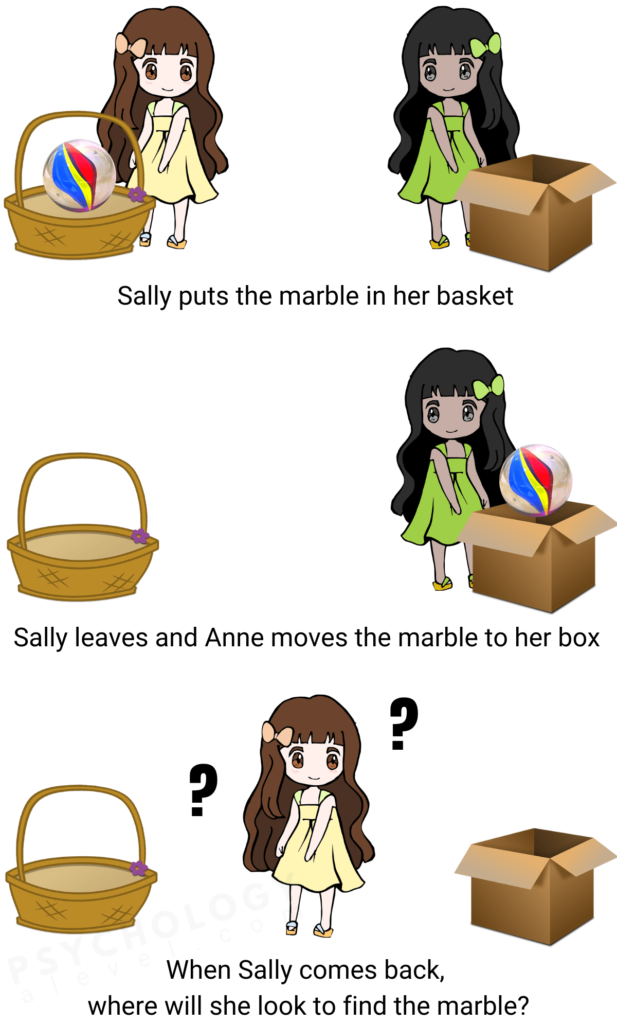 The Sally-Anne test is a way to test a person’s theory of mind.
The Sally-Anne test is a way to test a person’s theory of mind.
- Children were shown two dolls: Sally and Anne.
- Sally has a basket, Anne has a box.
- Sally hides a marble in her basket, then leaves the room.
- When Sally is away, Anne takes the marble from the basket and puts it in her box.
- Sally returns to the room.
- The child is then asked: Where will Sally look to find the marble?
The correct answer is that Sally will look in her basket for the marble. This is because Sally won’t have seen Anne move the marble into her box and so will have the false belief that it is still in her basket. It requires theory of mind to put yourself in Anne’s position and understand that she will have a false belief based on the information available to her.
Theory of mind as an explanation of autism
Baron-Cohen et al (1985) devised the Sally-Anne test and used it to conduct a quasi experiment on 3 groups of participants:
- 27 children with normal development
- 14 children with Down’s syndrome
- 20 children with autism
The children were asked several questions, such as “where was the marble in the beginning?” (the memory question) and “where is the marble really?” (the reality question). All children in the study answered these questions correctly. But when asked the theory of mind question – “where will Sally look to find the marble?” – the results were as follows:
- 85% of the normally developed children answered correctly
- 86% of the children with Down’s syndrome answered correctly
- But only 20% of the children with autism answered correctly
Autism is a developmental disorder characterised by difficulties with social cognition, such as difficulties interacting and communicating with other people. The findings of this study suggest these difficulties are caused – at least in part – by problems with theory of mind. People with autism may be unable to understand the minds of other people, such as what Sally will be thinking in the Sally-Anne test. This lack of theory of mind is sometimes called mind-blindness.
AO3 evaluation points: Theory of mind
Strengths of theory of mind as an explanation of social cognition:
- Supporting evidence: Baron Cohen et al’s (1985) findings have been replicated several times, which suggests the Sally-Anne test is a reliable measure of autism. Further, brain scans by Happé et al (1996) compared brain activity in autistic children to non-autistic controls during a theory of mind test. The researchers observed that the controls had significant activity in the left medial prefrontal cortex of the brain but the children with autism had no activity in this area. This supports theory of mind as an explanation of social cognition, and may also highlight the neural basis of theory of mind.
- Explanatory power: Theory of mind is able to explain the psychological observation that children with autism have difficulties engaging in pretend play (e.g. playing cops and robbers) like non-autistic children do. The explanation is that pretend play requires theory of mind (e.g. you must imagine you are a cop even though you are not) but since children with autism lack theory of mind they may have difficulties pretending such things and engaging in pretend play. The fact that theory of mind is able to explain this supports the conclusion that theory of mind is valid.
Weaknesses of theory of mind as an explanation of social cognition:
- Conflicting evidence: Tager-Flusberg (2007) conducted a review of several theory of mind tests (like the Sally-Anne test) on children with autism. Although these studies show children with autism are more likely to fail theory of mind tests, there are often examples of children with autism who pass these tests. This suggests that theory of mind is not a complete explanation of autism, as there are several examples of people with autism who have normally functioning theory of mind.
- Overlap with other explanations: There is a lot of overlap between theory of mind and perspective-taking, so much so that they might actually be the same concept. For example, theory of mind (as measured by e.g. the Sally-Anne task) is often used to explain autism, but Rehfeldt et al (2007) found that perspective-taking tasks also provide an accurate measure of autism. If perspective-taking explains everything that theory of mind can, then theory of mind is redundant and unnecessary.
- Other factors: Theory of mind is a cognitive ability but social factors (e.g. interactions and disagreements with other people) and biological factors (e.g. genetics) are likely to play a part in both the development of theory of mind and the development of social cognition more generally. As such, theory of mind is likely to be an incomplete account of social cognition.
The mirror neuron system
When you perform an action, neurons in the brain activate – no surprise. But also, those same neurons may activate when you observe someone else performing that action. These are mirror neurons: Neurons that activate both when you perform an action and when you observe someone else perform that action.
For example, Rizzolatti et al (1996) observed that, in monkeys, the same areas of the brain activated when the monkeys reached for food as when they watched someone else reach for food. This is one of the earliest studies demonstrating the existence of mirror neurons.
Mirror neurons may be the biological basis of social cognition, enabling us to empathise with others, which would help inform our theory of mind and perspective-taking.
Given that mirror neurons are associated with social cognition, and autism is associated with difficulties in social cognition, Ramachandran and Oberman (2006) propose the ‘broken mirror’ theory of autism. The broken mirror theory says autism is caused in part by deficiencies in the mirror neuron system.
AO3 evaluation points: The mirror neuron system
Strengths of the mirror neuron system as an explanation of social cognition:
- Supporting evidence: In addition to Rizzolatti et al (1996) described above, several other studies – including in humans – support the existence of mirror neurons and their role in social cognition.
- For example, Haker et al (2013) conducted fMRI brain scans while participants watched videos of people yawning. The researchers observed that areas of the mirror neuron system (the Brodmann’s area) activated while the participants watched the video. Based on this, they speculate that empathy via the mirror neuron system is why yawning is contagious.
- In another study using fMRI scans, Dapretto et al (2006) compared brain activity in autistic children to non-autistic controls when observing facial expressions. They observed that the autistic children had no activity in an area of the mirror neuron system (the interior frontal gyrus) compared to controls, lending support to the broken mirror theory of autism.
Weaknesses of the mirror neuron system as an explanation of social cognition:
- Conflicting evidence: Some studies cast doubt on the broken mirror theory of autism. For example, as well as social cognition, the mirror neuron system is heavily linked with motor actions (i.e. controlling ones’ movements). But fMRI scans of people with autism by Dinstein et al (2010) found they had normal mirror neuron activity when observing people perform motor actions (e.g. moving their hands), which suggests people with autism do not have deficits in their mirror neuron system.
- Methodological concerns: There are several methodological concerns about evidence for mirror neurons and theories of social cognition that are based on mirror neurons. For example:
- Specific mirror neurons not identified: Much of the evidence for mirror neurons is based on brain scans such as fMRI and EEG. However, these methods are only able to measure general brain activity in an area, not activity in specific neurons.
- Generalisation from animal studies: Hickok (2009) argues that observations in monkeys are overly generalised to human beings. For example, monkey studies such as Rizzolatti et al (1996) observe mirror neuron activity in monkeys watching people perform motor actions (e.g. reaching for food). But the mirror neuron explanation is then extended to higher cognitive processes in humans – such as language and theory of mind – which monkeys don’t have.
<<<Issues and debates
Schizophrenia>>>
or:
Eating behaviour>>>
or: